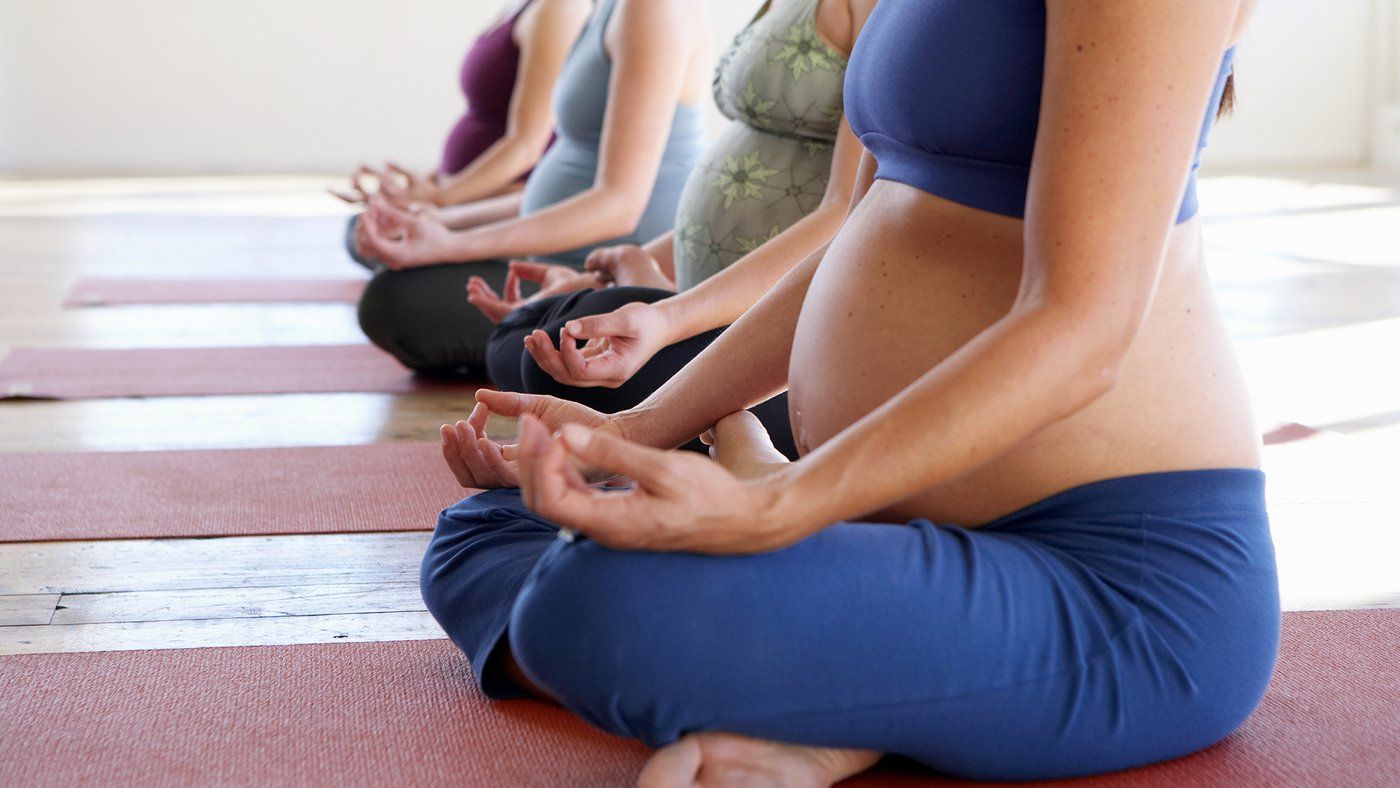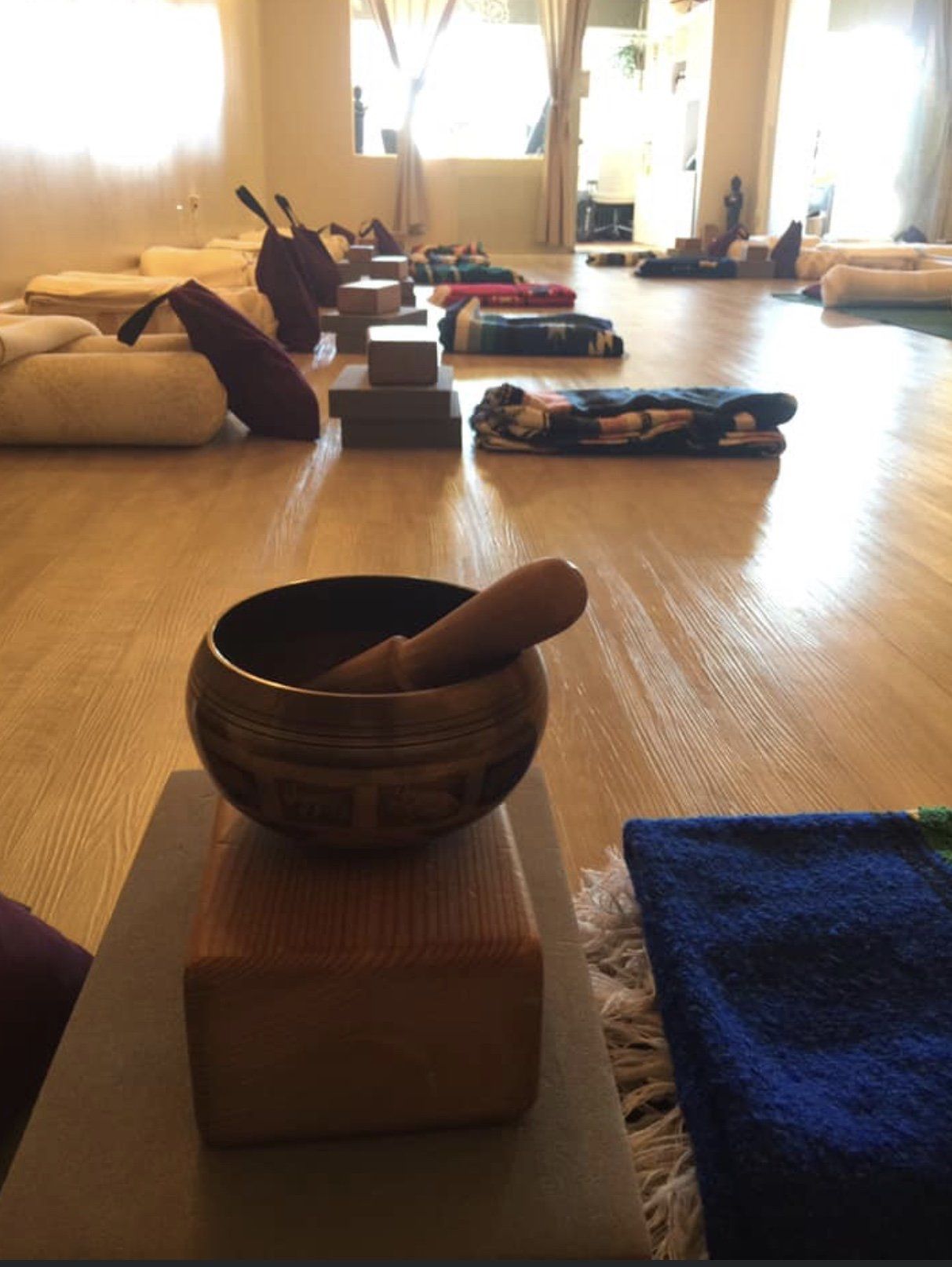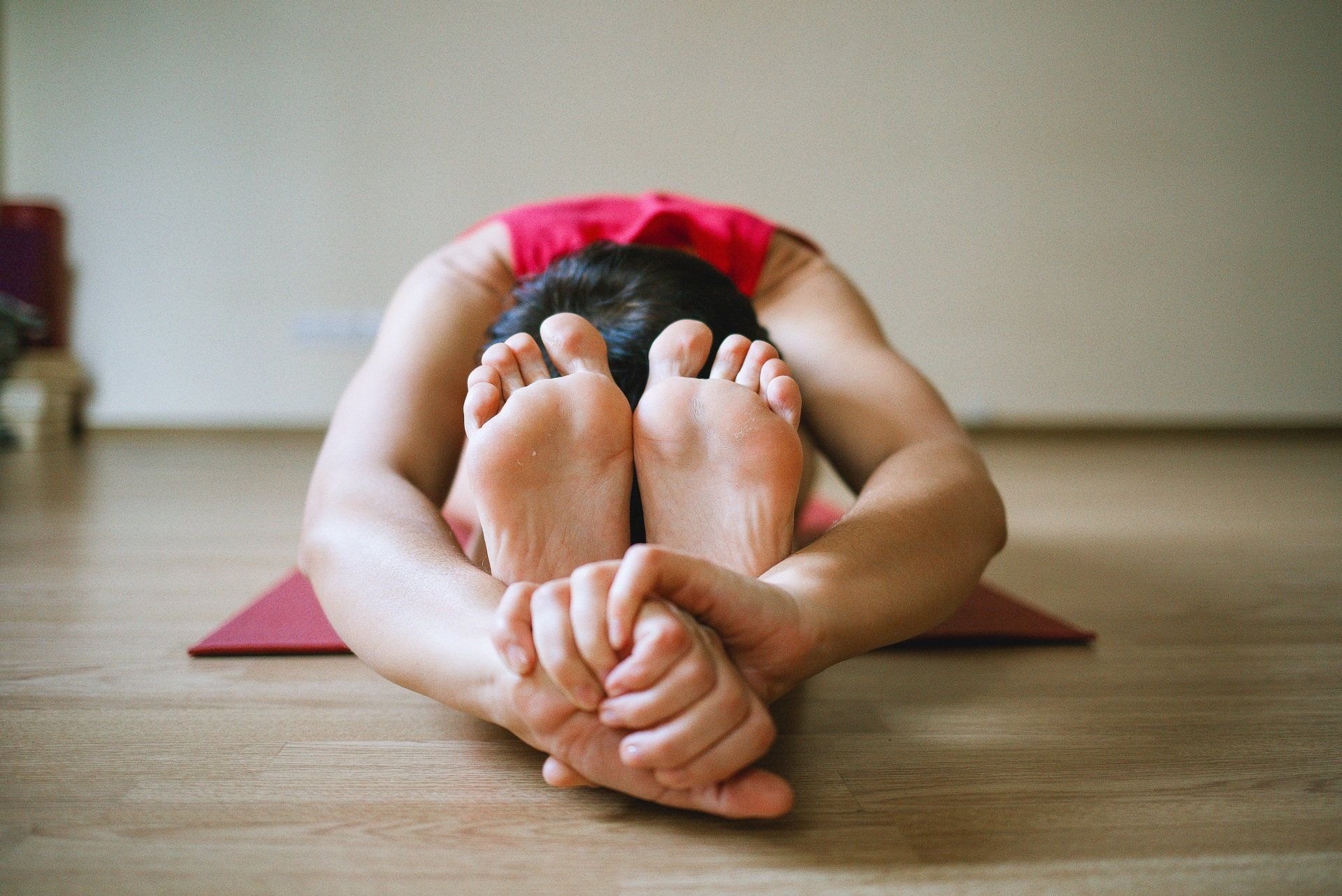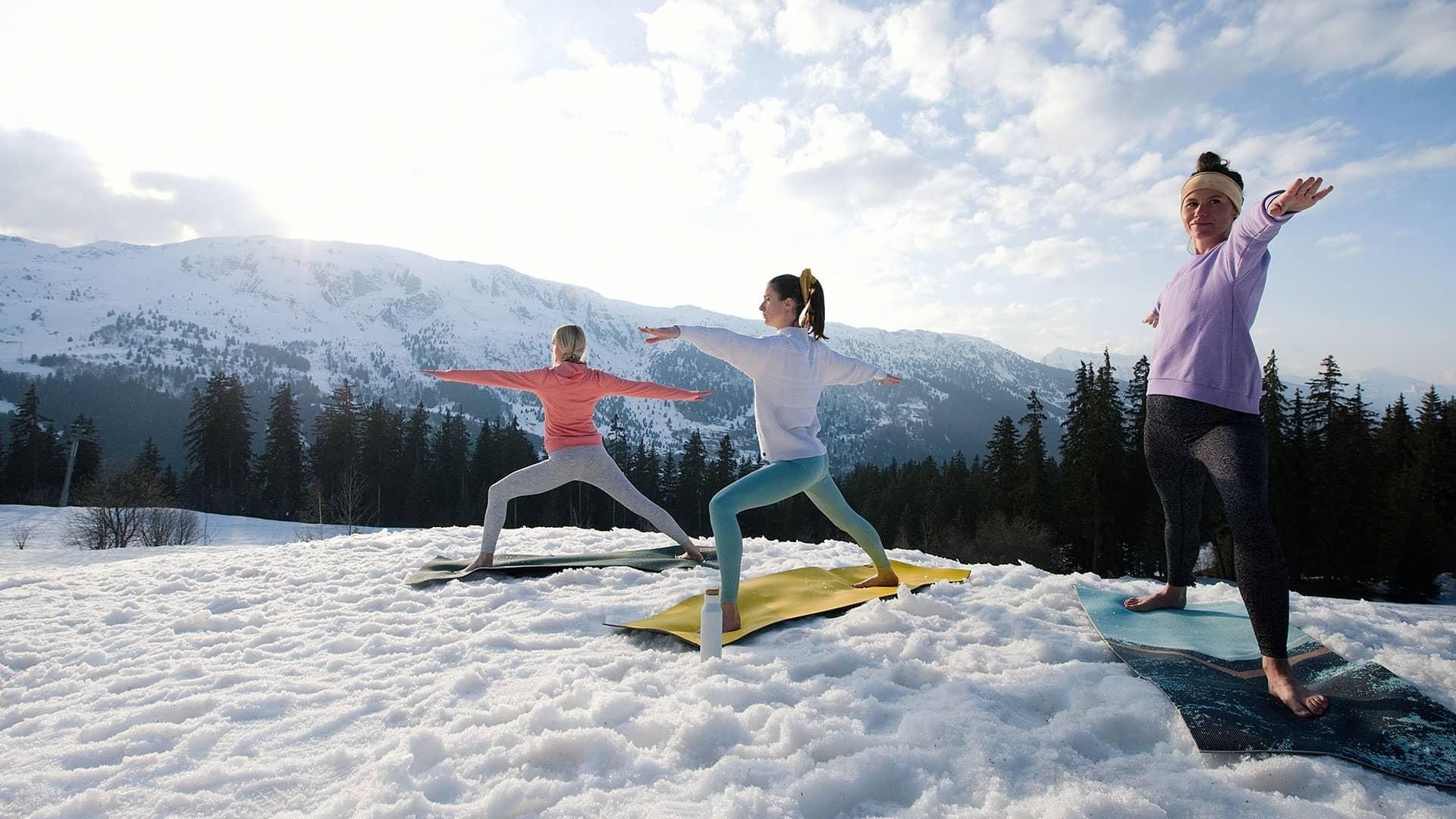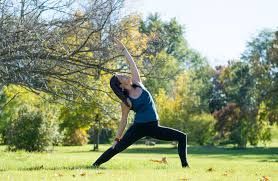A THANKSGIVING YOGA ROUTINE TO HELP YOU REST AND DIGEST
- By Charlotte Bell
- •
- 04 Oct, 2021
- •

A THANKSGIVING YOGA ROUTINE TO HELP YOU REST AND DIGEST
- Breathe: Begin by lying on a yoga mat in Constructive Rest position. (Lie on your back with your knees bent and the soles of your feet on the floor.) Begin breathing deeply, expanding your abdominal muscles completely on the inhalation and contracting them completely on the exhalation. Make sure you are not straining to inhale deeply. Stop just short of strain. Continue for a minute or two, allowing your body to relax as you exhale.
- Stabilize Your Core: From Constructive Rest Pose, cross your forearms behind your head. Your hands should be on opposite shoulders. Continue breathing deeply. The next time you exhale, lift your head and shoulders off the floor, continuing to breathe. After a few breaths, lower your upper body back onto the floor. Repeat several more times, switching the cross of your arms.
- Strengthen Your Back: We often mistake the abdominal muscles as being the entirety of the core. But strengthening our backs is just as important. Spending lots of time sitting in chairs weakens the back. Practicing poses such as Bhujangasana (Cobra Pose), can help strengthen the back part of our core. Practice 2 to 3 Cobras with deep, full breathing. In between, relax onto your mat with your forehead resting in your hands.
- Find Balance: Now that you’ve tended to your core, take that stability into a balance pose. Here are some suggestions: Vrksasana (Tree Pose), Garudhasana (Eagle Pose) or Hasta Padangusthasana (Hand-to-Big-Toe Pose). Balance poses not only teach your body the skill of balancing, but they also help promote concentration. If you have a lot of responsibilities to juggle during the holidays, balancing can provide grounding.
- Expand Your Heart: On Thanksgiving, we often encounter friends and relatives we haven’t seen in a while. We may or may not have much in common with them. An open-hearted approach can help us enjoy these interactions. You can literally expand your heart area by practicing a supported backbend. Try Supported Matsyasana (Fish Pose). Stay as long as it feels comfortable.
- Rotate and Relax: We’re now moving into the restorative section of the practice. This restorative twist can help you shift toward your parasympathetic (rest-and-digest) nervous system.
- Create Digestive Ease: Supta Baddha Konasana (Supine Bound Angle Pose) is essential to a Thanksgiving yoga practice. It’s one of the few poses that can be helpful to practice after eating. Remember this if you find yourself overstuffed during the holidays! I’ve never met anyone who didn’t love this pose. Stay as long as you like.
- Savasana: Make sure to give yourself ample time in Savasana (at least 10 minutes, more if you can). You can lie flat on the floor, or try this lovely, supported variation.
Finally, give thanks for your yoga practice! Yoga asana was originally developed to help calm the mind and body. This Thanksgiving yoga can be an ally for helping you move gracefully through the responsibilities and joys of the holidays.

Inhale: 1-2-3-4-5. Exhale: 1-2-3-4-5. If you’ve been doing breathing exercises to feel calmer, happier, and more focused, you know how soothing yoga is.
Despite being an ancient practice, yoga has become increasingly popular, and for good reason. It is suitable for people of all ages and effective for treating chronic conditions.
Interestingly, scientists have discovered that this practice has several mental health benefits. Let’s explore the relationship between yoga and well-being, as well as the evidence-based benefits of yoga.

So, it’s THAT time of year again. The cards are out, flowers and chocolates in the shops, and the candlelit tables are all booked up weeks in advance. With good reason, many of us find it all rather superficial and insincere. Perhaps some of us might join the cynical chorus asking why we need a specific day to express our affection for someone else. We may even go as far as to accuse the the forces of capitalism of driving demand for “stuff”. But I’m not here to monologue on the meaningfulness of St. Valentine’s Day, and I’m certainly not here to criticise anyone for wanting to express themselves or to show affection for someone else (we all need to be doing this more, not less).
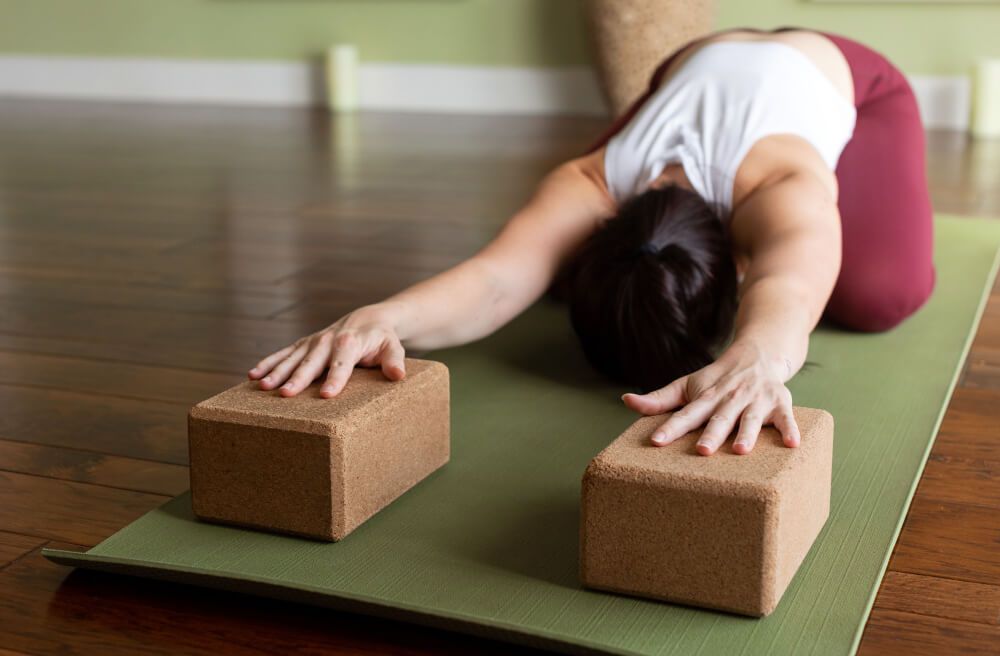
Can yoga reduce anxiety?Yes! Many studies have demonstrated the effectiveness of yoga in reducing stress, anxiety, and depression. In one study, women who participated in a three-month yoga program experienced significant improvements in perceived stress, anxiety, and depression. In another study, ten weeks of yoga helped reduce stress and anxiety for participants.
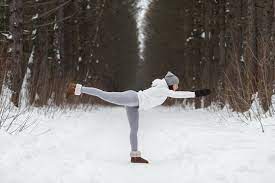
Happy New Year yogis! I’ve often found this time of year to be especially powerful in enhancing my yoga practice. Of course, yoga is always a powerful practice, but the gift of the new year brings deep reflection and introspection that can amplify processes of self-inquiry, expanding our spiritual awareness and commitment to yogic living.
